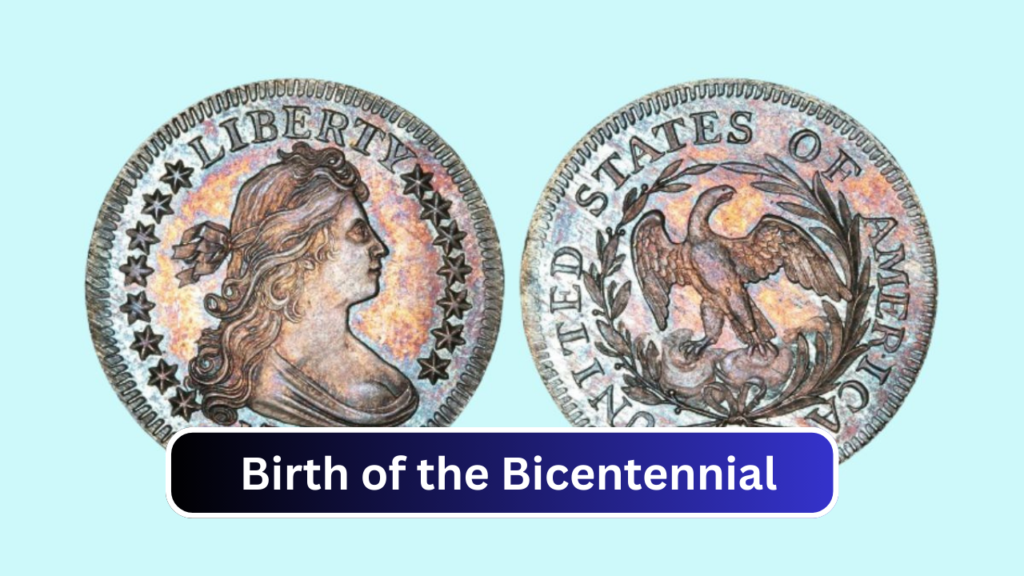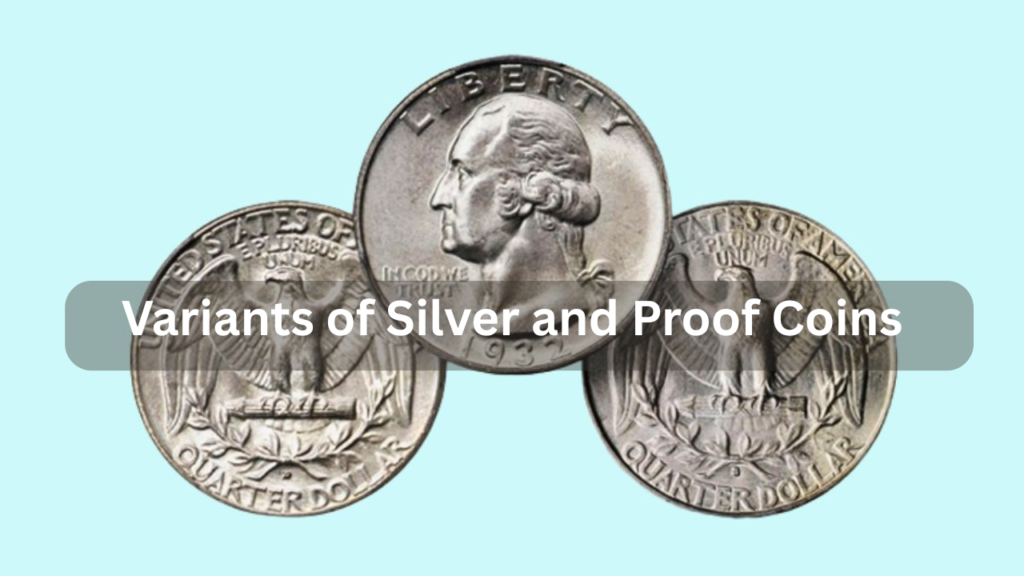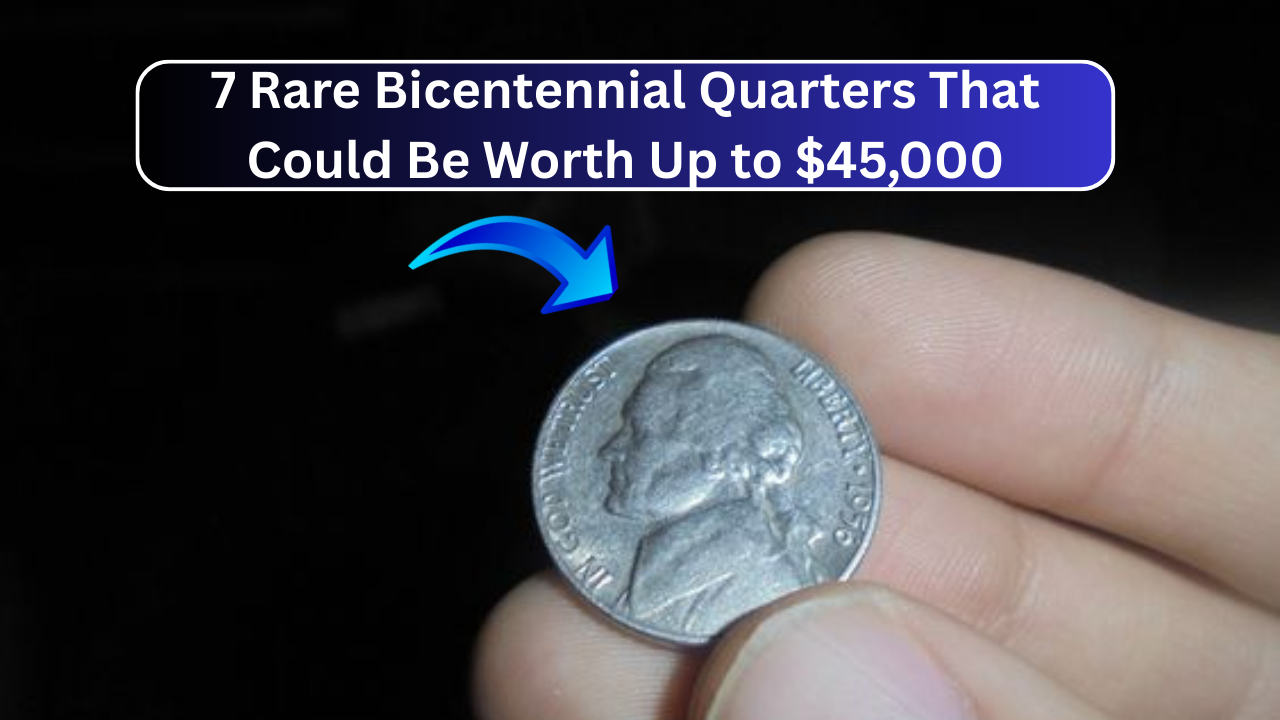6 Bicentennial Quarters Worth Up To $45,000 Each: The United States celebrated its 200th anniversary of its independence in 1976, and it even issued some special coinage to mark that event. A special type of coin included in the collections of these commemorative coins is the Bicentennial Quarter—not just because its design is magnificent, but also because it could become potentially very valuable to collectors today. Most of these quarters hang around worth their face, but there are rare variants that have been sold for as high as $45,000. So it might be worthwhile to check old coin jars for some of these beauties if you still have one lying around.
Bicentennial Coinage
The 1976 Bicentennial Quarter is more than just a piece of American history. It could also very well be valuable hidden treasure in your pocket! Most are worth only face value, but some rare versions with errors, silver content, or pristine condition have brought in thousands of dollars. If you own one, it is worth taking a moment and really inspecting it. Who knows? You may actually be sitting on a small fortune!
| Feature | Description | Approximate Value |
|---|---|---|
| 1976-S Proof Bicentennial Quarter | Special proof finish minted in San Francisco. | Up to $45,000 |
| 1976-D Bicentennial Quarter with D Mint Mark Error | Misplaced or filled “D” mint mark from the Denver Mint. | Up to $8,000 |
| 1976-S Type 1 Proof Bicentennial Quarter | Features a distinctive design with a smaller date. | Up to $10,000 |
| 1976 Bicentennial Quarter with Clipped Planchet | Coin with a portion missing due to minting error. | Up to $20,000 |
| 1976-D Bicentennial Quarter with Double Die Obverse | Doubling effect on the front design elements. | Up to $25,000 |
The Birth of the Bicentennial Quarter
The U.S. Mint created unique Bicentennial issues for the quarter, half-dollar, and dollar coins to commemorate 200 years of American independence. Jack L. Ahr created the Bicentennial Quarter, which includes:

- Obverse: George Washington’s well-known portrait.
- Reverse: 13 stars encircle a colonial drummer boy holding a victory torch.
unlike to regular quarters. Denver (D), San Francisco (S), and Philadelphia (no mint mark) produced the coins. Collectors are very interested in the 40% silver version produced by the San Francisco Mint.
What Makes Certain Bicentennial Quarters So Priceless?
Even though millions of these quarters were made, a few things could significantly raise their Value:
1. Minting Mistakes
Some coins are more desirable because of infrequent errors made during the minting process. Some mistakes are very beneficial:
- Double Die Obverse (DDO): This mistake gives the lettering a pronounced doubling effect. This error could add up to $25,000 to the value of a 1976-D Bicentennial Quarter.
- A clipped planchet occurs when a portion of the coin’s metal is missed during minting. The sale price of these coins was $20,000.
- Off-Center Strike: The coin’s price increases due to the design’s misalignment, which also makes it more rare.
2. Variants of Silver and Proof Coins
Proof coins are produced with a mirror-like finish and sharper details thanks to special techniques. The 1976-S Silver Proof Quarter is especially valuable; in pristine condition, it is worth about $45,000.
3. Rareness of Mint Marks
A coin’s value may vary depending on where it was struck:
- 1976-D (Denver Mint): Coins with errors in the mint mark, like a filled or misplaced “D,” can be worth up to $8,000.
- 1976-S (San Francisco Mint): Type 1 proofs, which have a smaller date, can sell for as much as $10,000.

4. Coin Grading and Condition
A coin’s value is largely determined by its condition. The most valuable coins are those in perfect condition (MS70), with grades ranging from MS60 to MS70. An MS67 or better graded 1976 Bicentennial Quarter can fetch thousands of dollars.
- Prominent Bicentennial Quarters of High Value (1976-S) Silver Bicentennial Quarter: At auction, a fine example brought $19,200.
- 1976-D Bicentennial Quarter with Obverse Die Cap Error: At auction, a rare minting error quarter brought $2,880.
How Can I Find Seven Bicentennial Quarters That Are Worth Up to $45,000 Each?
Use these procedures to determine if you possess a valuable Bicentennial Quarter:
1. Examine the Mint Mark
On the obverse side, look to the right of George Washington’s ponytail:
- Absence of mint Mark: “D” for Philadelphia Mint (common)
- Denver Mint is the mint mark (some are valuable, especially with errors)
- “S.” San Francisco Mint is the mint mark (the silver and proof versions are very valuable).
2. Check for Mistakes
To check for clipped edges, off-center strikes or double lettering, use a magnifying glass. Any anomalies have the potential to greatly increase value.
3. Evaluate the Coin’s State

Coins that are in mint condition—that is, uncirculated and have crisp details—are much more valuable than ones that are worn out. It might be worthwhile to have a professional service grade your quarter if it appears to be brand new.
4. Look for Silver Content
Weighing the coin is a straightforward test:
- The weight of the copper-nickel clad quarter is 5.67 grammes.
- A quarter of 40% silver weighs 5.75 grammes.
- Your quarter may be a valuable silver version if it weighs more.
FAQs:
1. How do I know if my Bicentennial Quarter is silver?
Check the edge of the coin. If you see a solid silver color with no copper stripe, it’s likely 40% silver. You can also weigh the coin to confirm.
2. Where can I sell my rare Bicentennial Quarter?
You can sell valuable quarters through:
Coin dealers and collectors
Online marketplaces like eBay
Auction houses specializing in rare coins
Coin shows and numismatic events


